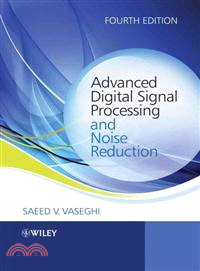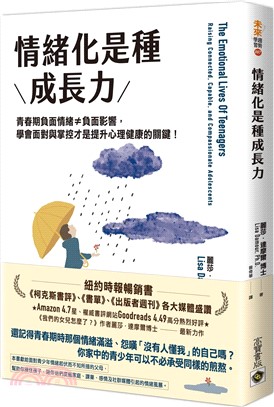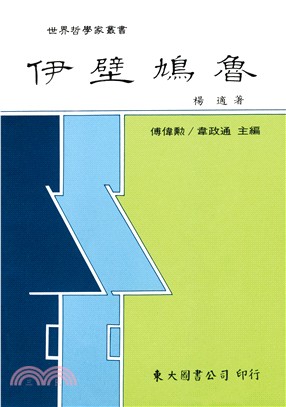Advanced Digital Signal Processing And Noise Reduction 4E
商品資訊
定價
:NT$ 8098 元優惠價
:90 折 7288 元
若需訂購本書,請電洽客服 02-25006600[分機130、131]。
相關商品
商品簡介
作者簡介
目次
商品簡介
Digital signal processing plays a central role in the development of modern communication and information processing systems. The theory and application of signal processing is concerned with the identification, modelling and utilisation of patterns and structures in a signal process. The observation signals are often distorted, incomplete and noisy and therefore noise reduction, the removal of channel distortion, and replacement of lost samples are important parts of a signal processing system.
The fourth edition of Advanced Digital Signal Processing and Noise Reduction updates and extends the chapters in the previous edition and includes two new chapters on MIMO systems, Correlation and Eigen analysis and independent component analysis. The wide range of topics covered in this book include Wiener filters, echo cancellation, channel equalisation, spectral estimation, detection and removal of impulsive and transient noise, interpolation of missing data segments, speech enhancement and noise/interference in mobile communication environments. This book provides a coherent and structured presentation of the theory and applications of statistical signal processing and noise reduction methods.
*
Two new chapters on MIMO systems, correlation and Eigen analysis and independent component analysis
*
Comprehensive coverage of advanced digital signal processing and noise reduction methods for communication and information processing systems
*
Examples and applications in signal and information extraction from noisy data
* Comprehensive but accessible coverage of signal processing theory including probability models, Bayesian inference, hidden Markov models, adaptive filters and Linear prediction models
Advanced Digital Signal Processing and Noise Reduction is an invaluable text for postgraduates, senior undergraduates and researchers in the fields of digital signal processing, telecommunications and statistical data analysis. It will also be of interest to professional engineers in telecommunications and audio and signal processing industries and network planners and implementers in mobile and wireless communication communities.
The fourth edition of Advanced Digital Signal Processing and Noise Reduction updates and extends the chapters in the previous edition and includes two new chapters on MIMO systems, Correlation and Eigen analysis and independent component analysis. The wide range of topics covered in this book include Wiener filters, echo cancellation, channel equalisation, spectral estimation, detection and removal of impulsive and transient noise, interpolation of missing data segments, speech enhancement and noise/interference in mobile communication environments. This book provides a coherent and structured presentation of the theory and applications of statistical signal processing and noise reduction methods.
*
Two new chapters on MIMO systems, correlation and Eigen analysis and independent component analysis
*
Comprehensive coverage of advanced digital signal processing and noise reduction methods for communication and information processing systems
*
Examples and applications in signal and information extraction from noisy data
* Comprehensive but accessible coverage of signal processing theory including probability models, Bayesian inference, hidden Markov models, adaptive filters and Linear prediction models
Advanced Digital Signal Processing and Noise Reduction is an invaluable text for postgraduates, senior undergraduates and researchers in the fields of digital signal processing, telecommunications and statistical data analysis. It will also be of interest to professional engineers in telecommunications and audio and signal processing industries and network planners and implementers in mobile and wireless communication communities.
作者簡介
SAEED V. VASEGHI, Brunel University, UK
目次
Contents
Symbols
Abbreviations
1 Introduction
1.1 Signals, Noise and Information
1.2 Signal Processing Methods
1.3 Applications of Digital Signal Processing
1.4 A Review of Sampling and Quantisation
1.5 Summary
Bibliography
2 Noise and Distortion
2.1 Introduction
2.2 White Noise
2.3 Coloured Noise; Pink Noise and Brown Noise
2.4 Impulsive and Click Noise
2.5 Impulsive and Click Noise
2.6 Thermal Noise
2.7 Shot Noise
2.8 Flicker (I/f) Noise
2.9 Burst Noise
2.10 Electromagnetic (Radio) Noise
2.11 Channel Distortions
2.12 Echo and Multi-path Reflections
2.13 Modelling Noise
2.14 Summary
Bibliography
3 Information Theory and Probability Models
3.1 Introduction: Probability and Information Models
3.2 Random Processes
3.3 Probability Models
3.4 Information Models
3.5 Stationary and Non-stationary Processes
3.6 Expected Values of a Process
3.7 Some Useful Classes of Random Processes
3.8 Transformation of a Random Process
3.9 Search Engines: Citation Ranking
3.10 Summary
Bibliography
4 Baseyian Inference
4.1 Bayesian Estimation Theory: Basic Definitions
4.2 Bayesian Estimation
4.3 The Estimate-Maximise Method
4.4 Cramer–Rao Bound on the Minimum Estimator Variance
4.5 Design of Gaussian Mixture Models
4.6 Bayesian Classification
4.7 Modeling the Space of a Random Process
4.8 Summary
Bibliography
5 Hidden Markov Models
5.1 Statistical Models for Non-Stationary Processes
5.2 Hidden Markov Models
5.3 Training Hidden Markov Models
5.4 Decoding of Signals Using Hidden Markov Models
5.5 HMM In DNA and Protein Sequence Modelling
5.6 HMMs for Modelling Speech and Noise
5.7 Summary
Bibliography
6 Least Square Error Wiener-Kolmogorov Filters
6.1 Least Square Error Estimation: Wiener-Kolmogorov Filter
6.2 Block-Data Formulation of the Wiener Filter
6.3 Interpretation of Wiener Filters as Projection in Vector Space
6.4 Analysis of the Least Mean Square Error Signal
6.5 Formulation of Wiener Filters in the Frequency Domain
6.6 Some Applications of Wiener Filters
6.7 Implementation of Wiener Filters
6.8 Summary
Bibliography
7 Adaptive Filters, Kalman, RLS, LMS
7.1 Introduction
7.2 State-Space Kalman Filter
7.3 Extended Kalman Filter
7.4 Unscented Kalman Filter
7.5 Sample-Adaptive Filters
7.6 Recursive Least Square(RLS) Adaptive Filters
7.7 The Steepest-Descent Method
7.8 The LMS Filter
7.9 Summary
Bibliography
8 Linear Prediction Models
8.1 Linear Prediction Coding
8.2 Forward, Backward and Lattice Predictors
8.3 Short-term and Long-Term Linear Predictors
8.4 MAP Estimation of Predictor Coefficients
8.5 Formant-Tracking LP Models
8.6 Sub-Band Linear Prediction
8.7 .i.Signal Restoration Using Linear Prediction Models
8.8 Summary
Bibliography
9 Eigenvalue Analysis and Principal Component Analysis
9.1 Introduction
9.2 Eigen Analysis
9.3 Principal Component Analysis
9.4 Summary
Bibliography
10 Power Spectrum Analysis
10.1 Power Spectrum and Correlation
10.2 Fourier Series: Representation of Periodic Signals
10.3.3 Energy-Spectral Density and Power-Spectral Density
10.3 Fourier Transform: Representation of Aperiodic Signals
10.4 Non-Parametric Power Spectrum Estimation
10.5 Model-Based Power Spectral Estimation
10.6 High Resolution Spectral Estimation Based on Subspace Eigen-Analysis
10.7 Summary
Bibliography
11. Interpolation – Replacement of Lost Samples
11.1 Introduction
11.2 Model-Based Interpolation
11.3 Model-Based Interpolation
11.4 Summary
Bibliography
12 Signal Enhancement via Spectral Amplitude Estimation
12.1Introduction
12.2 Spectral Representation of Noisy Signals
12.3 Vector Representation of Spectrum of Noisy Signals
12.4 Spectral Subtraction
12.5 Bayesian MMSE Spectral Amplitude Estimation
12.6 Estimation of Signal to Noise Ratios
12.7 Application to Speech Restoration and Recognition
12.8 Summary
Bibliography
13 Impulsive Noise: Modelling, Detection and Removal
13.1 Impulsive Noise
13.2 Autocorrelation and Power Spectrum of Impulsive Noise
13.3 Probability Models for Impulsive Noise
13.4 Impulse contamination, Signal to Impulsive Noise Ratio
13.5 Median Filters
13.6 Impulsive Noise Removal Using Linear Prediction Models
13.7 Robust Parameter Estimation
13.8 Restoration of Archived Gramophone Records
13.9 Summary
Bibliography
14 Transient Noise Pulses
14.1 Transient Noise Waveforms
14.2 Transient Noise Pulse Models
14.3 Detection of Noise Pulses
14.4 Removal of Noise Pulse Distortions
14.5 Summary
Bibliography
15 Echo Cancellation
15.1 Introduction: Acoustic and Hybrid.i.Hybrid Echoes
15.2 Echo Return Time: The Sources of Delay in Communication Networks
15.3 Telephone Line Hybrid Echo
15.4 Hybrid Echo Suppression
15.5 .i.Adaptive Echo Cancellation
15.6 Acoustic .i.Echo
15.7 .i.Sub-band Acoustic Echo Cancellation
15.8 .i. Echo Cancellation with Linear Prediction Pre-whitening
15.9 Multiple-Input Multiple-Output (MIMO) Acoustic Echo Cancellation
15.10 Summary
Bibliography
16 Channel Equalisation and Blind Deconvolution
16.1 Introduction
16.2 Blind-Deconvolution Using Channel Input Power Spectrum
16.3 Equalisation Based on Linear Prediction Models
16.4 Bayesian Blind Deconvolution and Equalisation
16.5 Blind Equalisation for Digital Communication Channels
16.6 Equalisation Based on Higher-Order Statistics
16.7 Summary
16.8 Bibliography
17 Speech Enhancement: Noise Reduction, Bandwidth Extension and Packet Replacement
17.1 An Overview of Speech Enhancement in Noise
17.2 Single-Input Speech Enhancement Methods
17.3 Speech Bandwidth Extension
17.4 Interpolation of Lost Speech Segments
17.5 Multiple-Input Speech Enhancement Methods
17.6 Speech Distortion Measurements
17.7 Summary
17.8 Bibliography
18 Multiple-Input Multiple-Output Systems, Independent Component Analysis
18.1 Introduction
18.2 MIMO Signal Propagation and Mixing Models
18.3 Independent Component Analysis
18.4 Summary
Bibliography
19 Signal Processing in Mobile Communication
19.1 Introduction to Cellular Communication
19.2 Communication Signal Processing in Mobile Systems
19.3 Noise, Capacity and Spectral Efficiency
19.4 Multi-path and Fading in Mobile Communication
19.5 Smart Beam-forming Antennas
19.6 Summary
Bibliography
Index
Symbols
Abbreviations
1 Introduction
1.1 Signals, Noise and Information
1.2 Signal Processing Methods
1.3 Applications of Digital Signal Processing
1.4 A Review of Sampling and Quantisation
1.5 Summary
Bibliography
2 Noise and Distortion
2.1 Introduction
2.2 White Noise
2.3 Coloured Noise; Pink Noise and Brown Noise
2.4 Impulsive and Click Noise
2.5 Impulsive and Click Noise
2.6 Thermal Noise
2.7 Shot Noise
2.8 Flicker (I/f) Noise
2.9 Burst Noise
2.10 Electromagnetic (Radio) Noise
2.11 Channel Distortions
2.12 Echo and Multi-path Reflections
2.13 Modelling Noise
2.14 Summary
Bibliography
3 Information Theory and Probability Models
3.1 Introduction: Probability and Information Models
3.2 Random Processes
3.3 Probability Models
3.4 Information Models
3.5 Stationary and Non-stationary Processes
3.6 Expected Values of a Process
3.7 Some Useful Classes of Random Processes
3.8 Transformation of a Random Process
3.9 Search Engines: Citation Ranking
3.10 Summary
Bibliography
4 Baseyian Inference
4.1 Bayesian Estimation Theory: Basic Definitions
4.2 Bayesian Estimation
4.3 The Estimate-Maximise Method
4.4 Cramer–Rao Bound on the Minimum Estimator Variance
4.5 Design of Gaussian Mixture Models
4.6 Bayesian Classification
4.7 Modeling the Space of a Random Process
4.8 Summary
Bibliography
5 Hidden Markov Models
5.1 Statistical Models for Non-Stationary Processes
5.2 Hidden Markov Models
5.3 Training Hidden Markov Models
5.4 Decoding of Signals Using Hidden Markov Models
5.5 HMM In DNA and Protein Sequence Modelling
5.6 HMMs for Modelling Speech and Noise
5.7 Summary
Bibliography
6 Least Square Error Wiener-Kolmogorov Filters
6.1 Least Square Error Estimation: Wiener-Kolmogorov Filter
6.2 Block-Data Formulation of the Wiener Filter
6.3 Interpretation of Wiener Filters as Projection in Vector Space
6.4 Analysis of the Least Mean Square Error Signal
6.5 Formulation of Wiener Filters in the Frequency Domain
6.6 Some Applications of Wiener Filters
6.7 Implementation of Wiener Filters
6.8 Summary
Bibliography
7 Adaptive Filters, Kalman, RLS, LMS
7.1 Introduction
7.2 State-Space Kalman Filter
7.3 Extended Kalman Filter
7.4 Unscented Kalman Filter
7.5 Sample-Adaptive Filters
7.6 Recursive Least Square(RLS) Adaptive Filters
7.7 The Steepest-Descent Method
7.8 The LMS Filter
7.9 Summary
Bibliography
8 Linear Prediction Models
8.1 Linear Prediction Coding
8.2 Forward, Backward and Lattice Predictors
8.3 Short-term and Long-Term Linear Predictors
8.4 MAP Estimation of Predictor Coefficients
8.5 Formant-Tracking LP Models
8.6 Sub-Band Linear Prediction
8.7 .i.Signal Restoration Using Linear Prediction Models
8.8 Summary
Bibliography
9 Eigenvalue Analysis and Principal Component Analysis
9.1 Introduction
9.2 Eigen Analysis
9.3 Principal Component Analysis
9.4 Summary
Bibliography
10 Power Spectrum Analysis
10.1 Power Spectrum and Correlation
10.2 Fourier Series: Representation of Periodic Signals
10.3.3 Energy-Spectral Density and Power-Spectral Density
10.3 Fourier Transform: Representation of Aperiodic Signals
10.4 Non-Parametric Power Spectrum Estimation
10.5 Model-Based Power Spectral Estimation
10.6 High Resolution Spectral Estimation Based on Subspace Eigen-Analysis
10.7 Summary
Bibliography
11. Interpolation – Replacement of Lost Samples
11.1 Introduction
11.2 Model-Based Interpolation
11.3 Model-Based Interpolation
11.4 Summary
Bibliography
12 Signal Enhancement via Spectral Amplitude Estimation
12.1Introduction
12.2 Spectral Representation of Noisy Signals
12.3 Vector Representation of Spectrum of Noisy Signals
12.4 Spectral Subtraction
12.5 Bayesian MMSE Spectral Amplitude Estimation
12.6 Estimation of Signal to Noise Ratios
12.7 Application to Speech Restoration and Recognition
12.8 Summary
Bibliography
13 Impulsive Noise: Modelling, Detection and Removal
13.1 Impulsive Noise
13.2 Autocorrelation and Power Spectrum of Impulsive Noise
13.3 Probability Models for Impulsive Noise
13.4 Impulse contamination, Signal to Impulsive Noise Ratio
13.5 Median Filters
13.6 Impulsive Noise Removal Using Linear Prediction Models
13.7 Robust Parameter Estimation
13.8 Restoration of Archived Gramophone Records
13.9 Summary
Bibliography
14 Transient Noise Pulses
14.1 Transient Noise Waveforms
14.2 Transient Noise Pulse Models
14.3 Detection of Noise Pulses
14.4 Removal of Noise Pulse Distortions
14.5 Summary
Bibliography
15 Echo Cancellation
15.1 Introduction: Acoustic and Hybrid.i.Hybrid Echoes
15.2 Echo Return Time: The Sources of Delay in Communication Networks
15.3 Telephone Line Hybrid Echo
15.4 Hybrid Echo Suppression
15.5 .i.Adaptive Echo Cancellation
15.6 Acoustic .i.Echo
15.7 .i.Sub-band Acoustic Echo Cancellation
15.8 .i. Echo Cancellation with Linear Prediction Pre-whitening
15.9 Multiple-Input Multiple-Output (MIMO) Acoustic Echo Cancellation
15.10 Summary
Bibliography
16 Channel Equalisation and Blind Deconvolution
16.1 Introduction
16.2 Blind-Deconvolution Using Channel Input Power Spectrum
16.3 Equalisation Based on Linear Prediction Models
16.4 Bayesian Blind Deconvolution and Equalisation
16.5 Blind Equalisation for Digital Communication Channels
16.6 Equalisation Based on Higher-Order Statistics
16.7 Summary
16.8 Bibliography
17 Speech Enhancement: Noise Reduction, Bandwidth Extension and Packet Replacement
17.1 An Overview of Speech Enhancement in Noise
17.2 Single-Input Speech Enhancement Methods
17.3 Speech Bandwidth Extension
17.4 Interpolation of Lost Speech Segments
17.5 Multiple-Input Speech Enhancement Methods
17.6 Speech Distortion Measurements
17.7 Summary
17.8 Bibliography
18 Multiple-Input Multiple-Output Systems, Independent Component Analysis
18.1 Introduction
18.2 MIMO Signal Propagation and Mixing Models
18.3 Independent Component Analysis
18.4 Summary
Bibliography
19 Signal Processing in Mobile Communication
19.1 Introduction to Cellular Communication
19.2 Communication Signal Processing in Mobile Systems
19.3 Noise, Capacity and Spectral Efficiency
19.4 Multi-path and Fading in Mobile Communication
19.5 Smart Beam-forming Antennas
19.6 Summary
Bibliography
Index
主題書展
更多
主題書展
更多書展本週66折
您曾經瀏覽過的商品
購物須知
外文書商品之書封,為出版社提供之樣本。實際出貨商品,以出版社所提供之現有版本為主。部份書籍,因出版社供應狀況特殊,匯率將依實際狀況做調整。
無庫存之商品,在您完成訂單程序之後,將以空運的方式為你下單調貨。為了縮短等待的時間,建議您將外文書與其他商品分開下單,以獲得最快的取貨速度,平均調貨時間為1~2個月。
為了保護您的權益,「三民網路書店」提供會員七日商品鑑賞期(收到商品為起始日)。
若要辦理退貨,請在商品鑑賞期內寄回,且商品必須是全新狀態與完整包裝(商品、附件、發票、隨貨贈品等)否則恕不接受退貨。
























